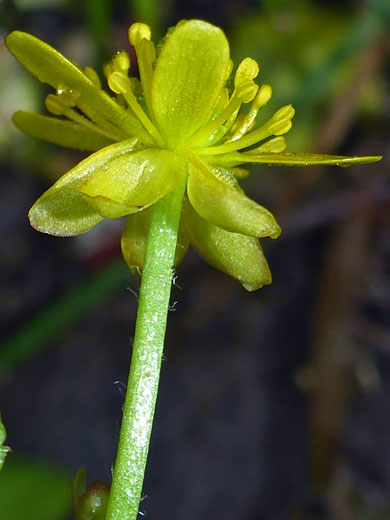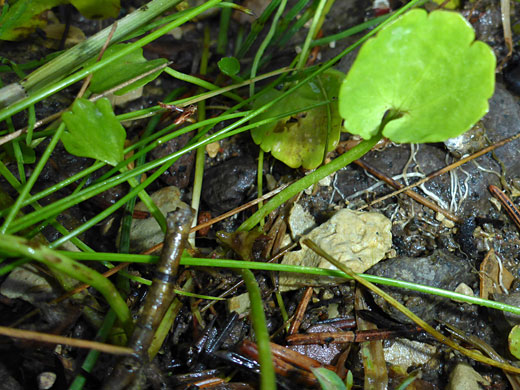Ranunculus Cymbalaria, Alkali Buttercup
Plants > Wildflowers > Ranunculaceae > Ranunculus Cymbalaria
Common names:
Alkali buttercup, seaside buttercup
Family:
Scientific name:
Ranunculus cymbalaria
Main flower color:
Range:
All the western states, except Texas
Height:
A few inches; stems are creeping, up to 12 inches long
Habitat:
Wet or muddy places, often saline, from sea level to 10,000 feet
Leaves:
Basal leaves are round to oblong, up to 1.5 inches across, lined by shallow, broad teeth, while stem leaves are narrower
Season:
May to September
Ranunculus cymbalaria is a common species, absent from Texas but found in all the other western states, and occurring in riparian locations, often alkaline, from the coast to high mountains. Leaves are mostly basal, though also along the lower portion of the flowering stem, and on the stolons by which the plant spreads to form colonies. Leaves are attached by long stalks. Blades of the basal leaves are round or nearly so, often extending backwards from the attachment point, and crenate along the margins.
Flowers are formed of five spreading sepals, soon withering, and five narrow, obovate petals, about twice as long as the sepals, though still relatively short, less than 0.3 inches. Sepals are spreading to reflexed. The yellow stamens radiate outwards, while the green carpels form a compact cluster at the center, elongating during the fruiting stage.
Flowers are formed of five spreading sepals, soon withering, and five narrow, obovate petals, about twice as long as the sepals, though still relatively short, less than 0.3 inches. Sepals are spreading to reflexed. The yellow stamens radiate outwards, while the green carpels form a compact cluster at the center, elongating during the fruiting stage.
All Contents © Copyright The American Southwest | Comments and Questions | Contribute | Site Map



